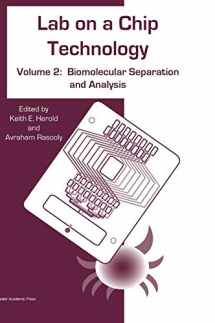
Lab-on-a-Chip Technology (Vol. 2): Biomolecular Separation and Analysis
Book details
Summary
Description
Lab-on-a-Chip (LOC) technology is a rapidly expanding area of science. It has applications in biotechnology, medicine, clinical diagnostics, chemical engineering, and pharmaceutics. As the LOC systems increase in importance and complexity, it is important for scientists to become familiar not only with the technology, but also with the potential applications. The editors of this book have brought together expert authors from many countries to produce a comprehensive volume focusing on the applications of LOC technology in the biomedical and life sciences. The first section includes chapters on LOC biomolecule separation. Separation of biomolecules is an important element of various clinical laboratories and is required for many "down stream" analytical applications. Various electrophoresis and liquid chromatography applications for proteins and DNA are described, as well as methods for cell separation, with an emphasis on blood cell separation, which have many important clinical applications. The second part includes chapters on analysis and manipulation technologies. Authors describe protein, genetic (mainly PCR), and transcriptome analysis with examples from research and clinical applications, as well as cell manipulation and analysis including cell viability analysis and microorganism capturing. A skillful selection of topics of exceptional importance to current science ensures that this book will be of major value to a wide range of molecular biologists, clinical scientists, microbiologists, biochemists, and anyone interested in LOC technology or developing applications for LOC devices.


We would LOVE it if you could help us and other readers by reviewing the book
Book review



